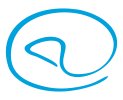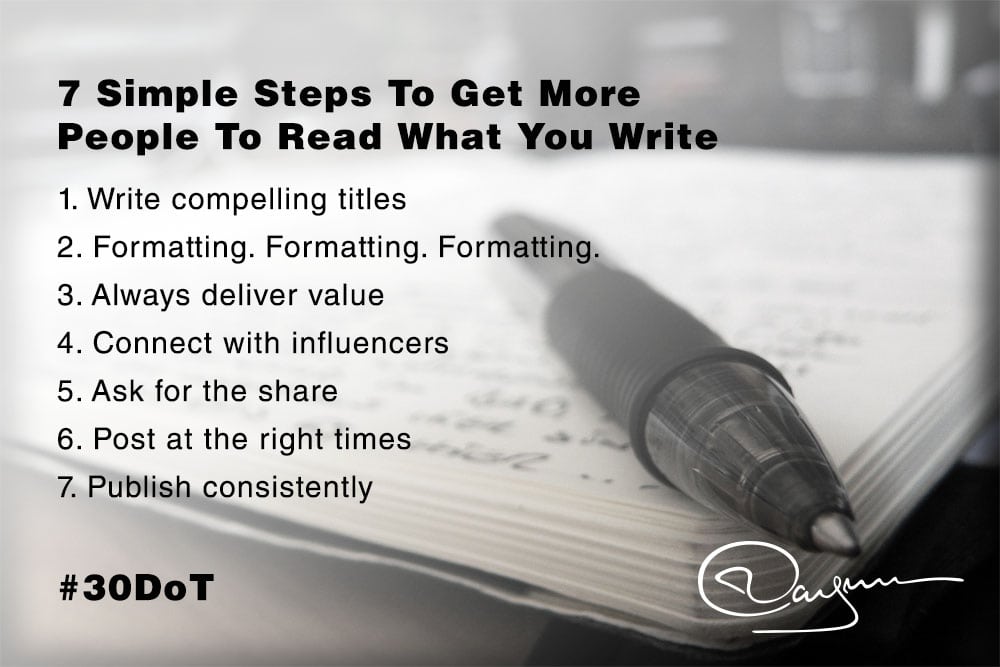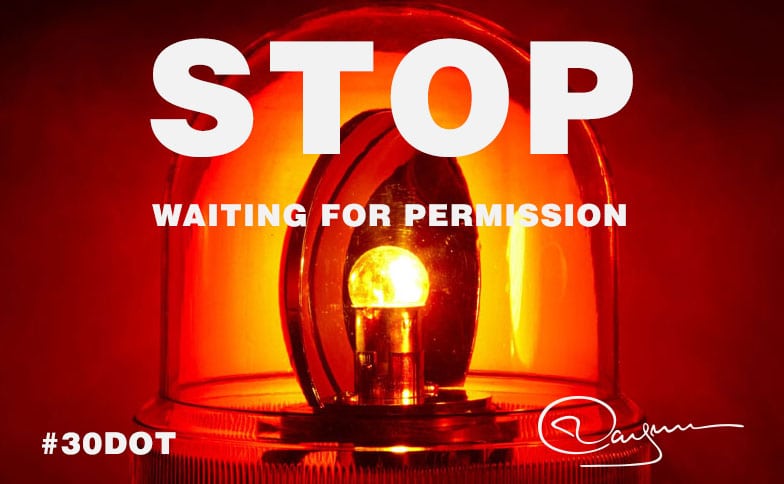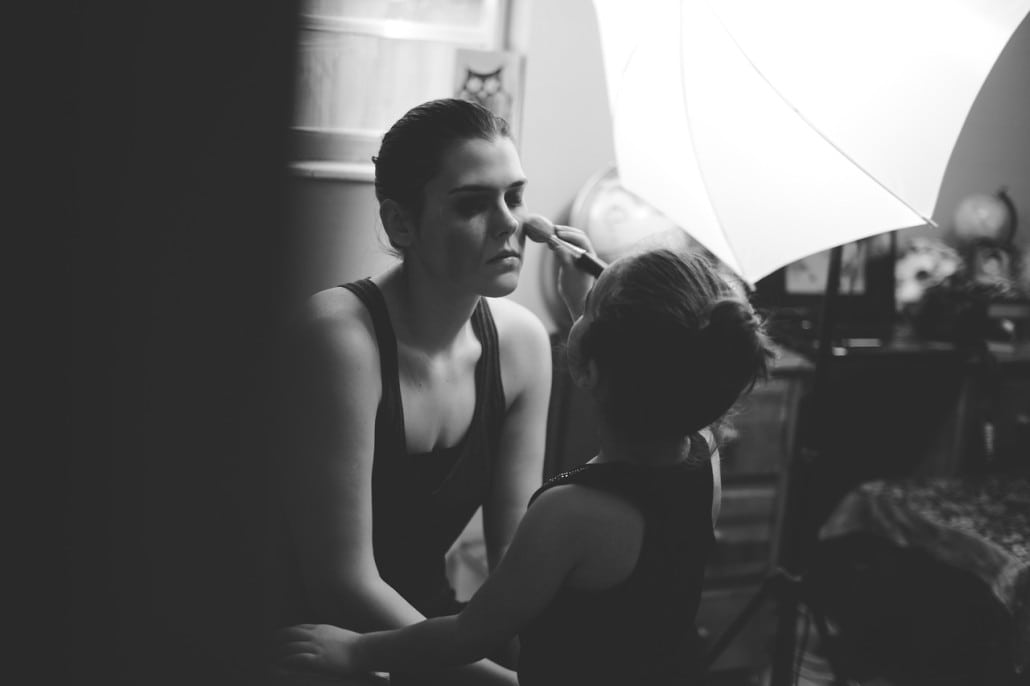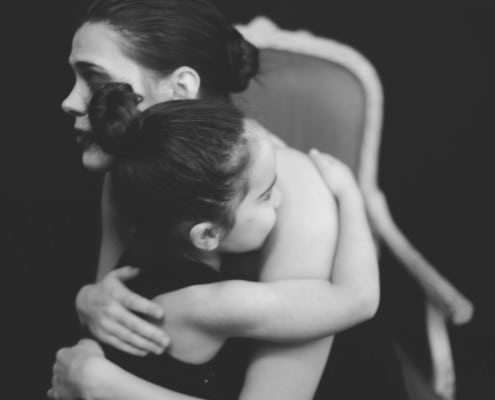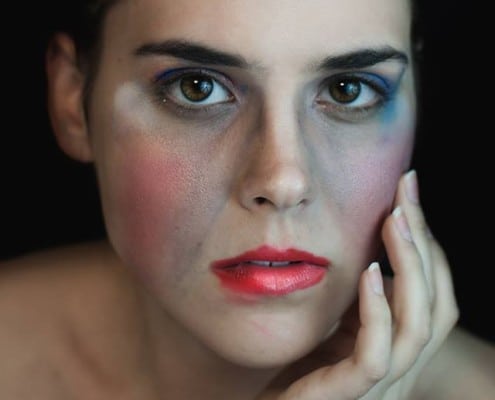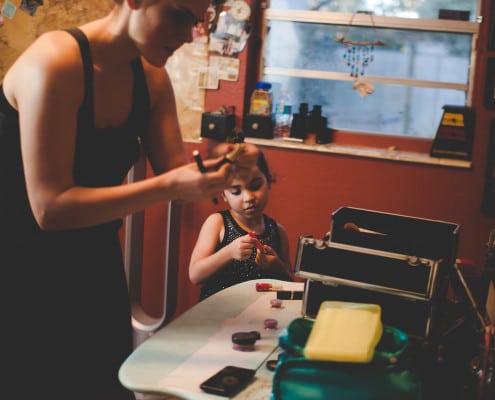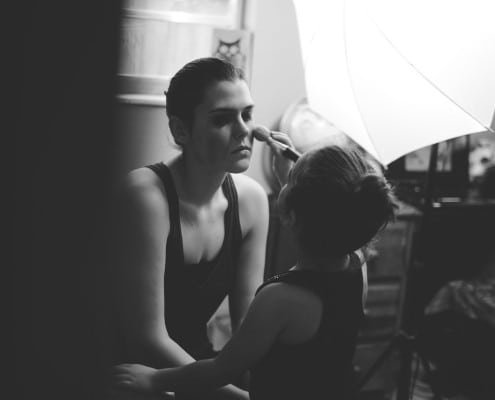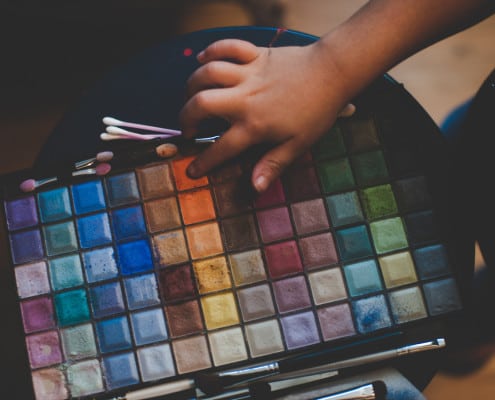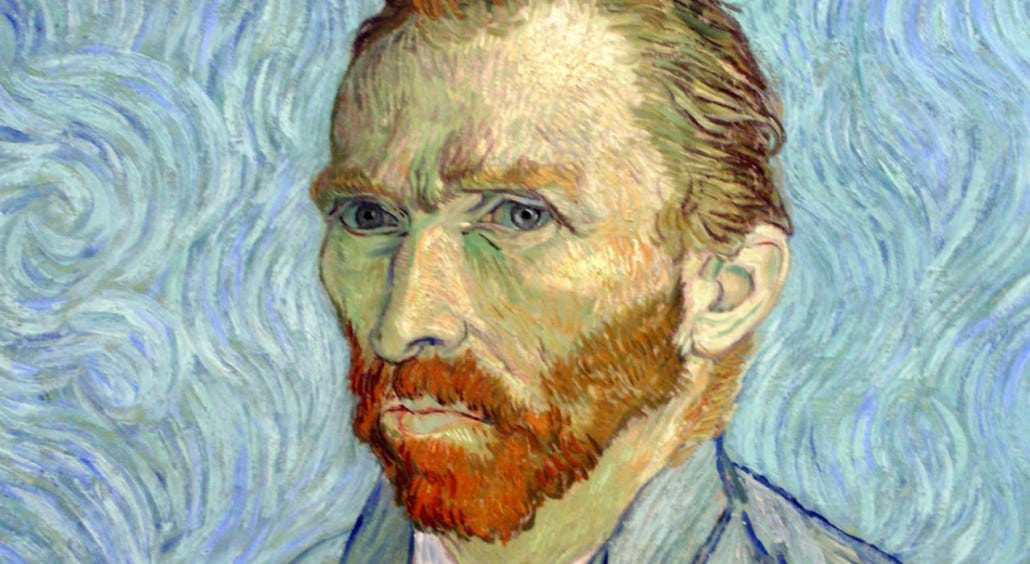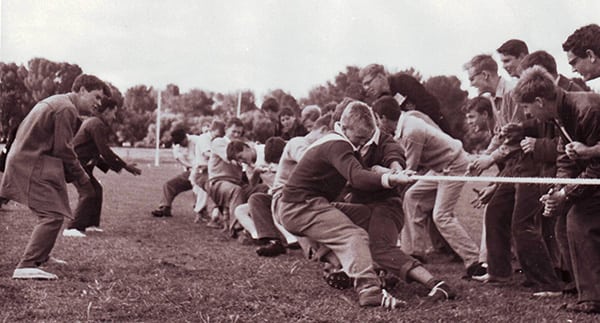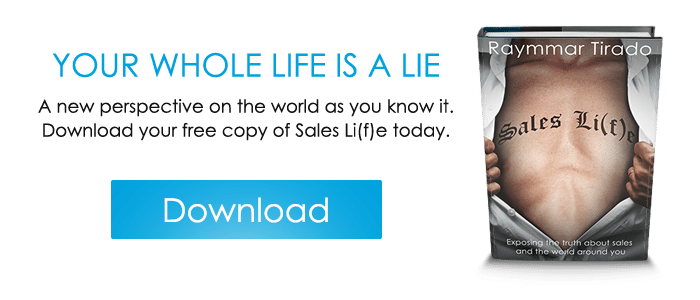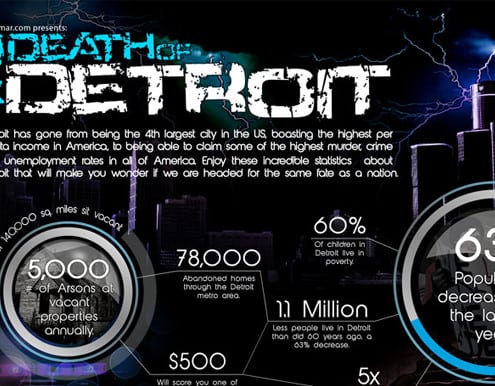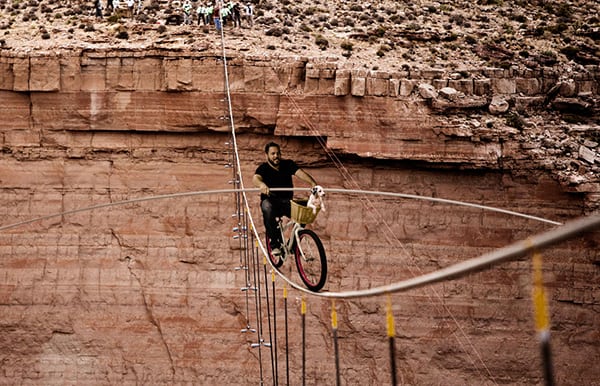Steve Shenbaum from “game on” shares some time tested tips for how to mesmerize a crowd and take control of a live audience.
Posts
Being your own boss can be hard, but it can also provide the ultimate pay off.
This post is part of my 30 day creative writing challenge. Click here to learn more about the challenge or here to explore the other posts in this series.
So, you’ve been writing for a while now, maybe even started your own blog, but no one is reading what you write…
This article is going to help you fix that!
Highlight any text in this article to share it directly.
You’ve tweeted your post, Facebooked it, hash-tagged it, and even spammed your friends and family with emails linking to your work. You know the world would love what you have written, if only you could get them to read it. But how the heck do you get people to notice your work online?
First, it helps to put yourself in the readers shoes. Think about how you browse the net. Think about how you skim articles, scroll through social feeds, and engage with the content you enjoy.
Once you do that, you can see how easy it is to have people skip right over your work. People are impatient online so it’s up to you to snatch their attention whenever you get a chance.
Don’t take it personal if your writing doesn’t go gangbusters as soon as you hit publish. Writing and articulating your thoughts is an important part of the process, but it’s just the beginning. If you want to get people to consistently read what you write then you have to promote your work and give it the best chance to get noticed online.
There are specific ways to do this right, and blasting your Facebook feed with the same link 10 times a day is not the way to do it. If you’re serious about getting people to read what you write, then here are a few tips to help you attract those eyeballs on a consistent basis.
1. Writing compelling titles
You should spend as much time on the title as you do on the article itself as this sets the expectation for the reader. Everyone online judges book by their cover. 80% of people decide whether to click on a link based on the title alone.
Most of my articles actually start out as an idea for a compelling title. I have a blog concepts folder in my Evernote that is full of ideas and titles for articles that I would like to write. Usually it’s just a concept for the article, some ideas on the title, and a sentence or two about what I would like to delver with that particular post. Then whenever I want to write something, I can just go into that folder and go from there.
Want to read more about how to write compelling titles? Click here
2. Formatting. Formatting. Formatting.
Seriously, if your post is just one long paragraph, I’m gonna click the back button before I read the first sentence.
Short paragraphs work best online and using headings to split up the post is always a good idea. You can also use things like block quotes, call outs and images to break up your content and make it easier to read.
Want to read more about formatting the perfect post? Click here
3. Always deliver value
If you want people to read your words, then you have to give them a reason to do so. To do that, each article should have a specific take away. This also gives the reader a reason to click on your link the next time they see it in their news feed.
Writing personal posts can be empowering, but most people don’t want to read your frivolous rants about life.
However, people love a good story. So if your writing skills are strong enough, then you can definitely deliver a compelling personal story that people will love to read.
Just make sure you write it in a way that allows the reader to place themselves inside of your story. Let the reader connect with you emotionally and you will quickly find yourself in front of a growing audience.
Want to read more about delivering value and blowing your readers minds? Click here
4. Connecting with influencers
Influencers are people who have large online audiences. People who can share a link to your work and help you gain exposure.
All traffic on the internet comes from links. Whether it is a link on a Google search result page, another blog, or social media, the only way to get people to your site is by having other people to link to it.
You can do this by connecting with influencers in your industry and sharing your post with them directly.
How do you do that? Find out where they are and start engaging with them. They are more likely to notice you if you notice them first. Quid pro quo is a perfectly acceptable strategy when it comes to sharing content online and growing your audience.
Want to read more about how to get influencers to share your work? Click here
5. Asking for the share
I always ask for a share at the end of my posts. It usually goes something like this
“If you enjoyed this post, I would appreciate you sharing it with a friend. It’s the biggest compliment you could ever give me! Thanks.”
Adding something like this to the end of your posts is not spammy and is a great way to build your social shares.
Think about it, they just read your entire article. And presumably, we only read things we like, so asking someone to share something that they just read and liked is a pretty logical progression.
Not everyone will share your work, but every extra share means extra eye balls on your post and that is the overall goal.
Want to read more about how to ask people to share your posts? Click here
6. Posting at the right times
Knowing when your audience is most likely to engage with your work takes time but it is something you should think about when publishing on your website or on social media.
For me, I have the most success when I post articles in the mornings, around 8:00 am to be precise. Additionally, Mail Chimp tells me that the best to send my emails is around 10:00 am. But that is all based on my particular audience.
The best times to post for your particular audience may vary, and probably will for most of you. If you want to give your content the best chance at being read, then knowing when to post it is pretty important.
Want to read more about proper post timing? Click here
7. Publishing Consistently
I don’t mean to tell you that you need to publish your posts at the same time each week, or even that you need to publish something new every day. What I mean when I say consistency, is that you have to constantly produce high quality content in order to build credibility with your audience.
Publishing on the same day each week and having a consistent schedule is not going to hurt, but regularly producing great content is more important than posting each article at a particular time.
But remember, frequency is nowhere near as important as quality. Regularly posting crap content is a sure fire way to train people to ignore your work.
Set a standard for the quality of your posts and do not publish anything until you think it meets those standards. It’s hard to gain credibility online but it’s really easy to lose it.
Want to read more about how to publish consistently and not get burned out? Click here
In Closing
These are just some basic guidelines to follow. There are a ton of other things you can do to get your work in front of a larger audience, but the tips in this article are a great place to start out as a beginner. You won’t be held back by a bunch of technical hurdles, and it’s the easiest way to quickly grow your online audience.
Got any tips for growing an online audience or getting people to read what you write? Leave them in the comments below!
And of course, if you enjoyed this article, please share it with a friend. It’s the best compliment you could ever give me!
This post is part of my 30 day creative writing challenge. Click here to learn more about the challenge or here to explore the other posts in this series.
“Good artists borrow, great artists steal.”
Pablo Picasso said that… or did he?
Highlight any text in this article to share it directly.
Supposedly this is a Picasso quote, but this article claims otherwise, and gives us an interesting perspective on what that quote actually means.
As an artist, I have heard this quote many times over the years. I have also heard people discussing its true definition, often with the wrong connotations.
Many people take it as permission to plagiarize or directly steal someones work, but that’s taking the quote completely out of context from the creative mind. In reality, what the quote is intended to portray, is that a great artist steals inspiration, not the work itself. A great artists will see something of beauty, and then understand how to make it more beautiful by adding a piece of themselves to it.
A lesser artist will attempt to accurately copy the existing art, and in the process create a lesser quality knockoff. This can be the only result, because there is nothing to gain from copying something that is already in existence. It just becomes something to do.
There is no innovation or creative process involved in passing someones work off as your own, but to see something of value and then make it yours… That is the sign of true creative genius.
A great artist will find inspiration in everything around them and steal that inspiration to make it the foundation for their art. This is why artists, musicians, writers etc, always need a muse. They need something to move them emotionally. Something from which they can steal inspiration in order to do their best work.
The great artists see the world around them as a vision board. As a concept for what they might create, limited only by the boundaries of their creative brains. The great artist steals from everything they see. From all of their experiences and all of their interactions. We steal inspiration from everywhere we can because we ourselves are inspired.
Inspired to create. Inspired to build. Inspired to change. Ourselves and the world around us.
So the next time you find yourself in a creative slump, just take a look around. There is beauty all around you from which to steal. There is plenty of inspiration to go around and always remember that the sign of a true artist is their ability to steal something and then make it unique. To make something that is the same, but different.
Because there is no real originality. There is only continual duplication. So it is necessary to steal. But only the inspiration behind the work. Not the work itself.
So, if you find yourself stealing directly from someones work, then maybe that means that you are not the great artist you thought you were.
This post is part of my 30 day creative writing challenge. Click here to learn more about the challenge or here to explore the other posts in this series.
I want everyone who reads this post to do one thing today. Actually, you should do it this very second.
I want you to quit pretending like there is going to be a moment where someone walks over to you and says “Hey there, It’s your turn to be amazing today!”
Stop pretending like things are going to get better on their own, or that a business is just going to build itself, simply because you had a great idea.
Stop waiting for the light to turn green. Just look to both sides to make sure there’s at least a shot of making it across the intersection and run the damn light! Why the hell is there a light there anyway?
As soon as you can do that, you are one step closer to becoming the real you. Closer to being the person you were always meant to be.
So right freaking meow, before you move another muscle. I want you to…
Stop waiting for permission to pursue your dreams.
I want you to stop doubting yourself and give in to your inner winner.
I want you to stop talking in the mirror as if you hated yourself, and start telling yourself something specific you want to accomplish each day.
I want you to stop yourself every time you try to bring yourself down. Stop letting the world inside of your mind run over you. Seriously, quit that shit.
Quit waiting for someone to tell you what you can or cannot do in this world.
Quit thinking that you have to live your life one way or another. Quit thinking that you have to do things today the same way you did them yesterday. Quit thinking of yourself as second class.
Stop thinking that the purpose of your life is to serve as a cog in some other mans machine. Sure, some people make great cog’s, but not you.
Stop acting like you can’t go out tomorrow and make something happen on your own. Like you couldn’t go out right now and do something that would help you be a happier more fulfilled version of yourself.
Stop pretending that the world is not malleable. That everything you want is not within your reach. You just have to be willing to go out and grab it.
Stop thinking that you are incapable and just do it! Do something new, do something completely out of character. Surprise a friend, kiss that girl, change your routine. Do something. Anything to shake the machinery of monotony. The habits of humanity that so many of us refer to as life.
Start waking up each day with the thought that you are meant to do something special with your life. Reassure yourself that you are not just another purposeless pawn, professional this, hourly that, or salaried brat.
Quit your job and start that company you’ve been talking about. Ask that redhead on the airplane out for a date. Do something that makes life last.
Because it is in those moments that time stands still. It is in those moments that we can live forever. The brief moments in time, when we define who we are and what we will become.
So stop asking for permission. Just go out there and break some shit!
Maybe a leg, maybe a bank account. Maybe just your own ego. Whatever it is you need to break, then break it. Whatever you need to do, then do it.
Test yourself. Find out what you are capable of by pushing yourself to the brink. Because it is in that moment when you will find the person you have been looking for all along. Then, and not a second sooner.
Sticks and stones my ass. Words hurt like hell and they have the power to destroy. They can control you, drive you, push and pull you. Words are all things and words are nothing. Everything is a word, and according to Urban Dictionary, so is this but…
What exactly is a word?
If you Google the word “word,” you get this:
noun – 1. a single distinct meaningful element of speech or writing, used with others (or sometimes alone) to form a sentence and typically shown with a space on either side when written or printed.
And if you dig a little deeper, (all the way down to the next result) you find this definition:
: a sound or combination of sounds that has a meaning and is spoken or written
or
: a brief remark or conversation : something that a person says
Getting closer but words are stronger than that
Words are the foundation of everything we do; of everything we are. They are the mechanism by which you are currently reading my thoughts, and they are the core components of communication in any real sense.
There is no other way to describe in detail, the events of any particular moment in time, without diving into the words of some other individuals reality. And even if you could, how would you describe it without words?
Sure there are pictures and video, but the world captured inside of them must also rely upon words.
Words are the purpose of art.
Art is the visual expression of the words inside of an artists head. The visual representation of emotion. Interpretations designed to spark thought. Thoughts that can drive words from your mind to your mouth. From pen to paper.
A writer must paint with no brush and shoot video with no camera. They must reach through the eyes of a reader using these silly arrangements of letters that we call words, and those words must appeal to intellect, as well as emotion. They must move the audience with substance, not simply with style.
Words are pictures that develop right in front of the readers eyes. A painting that is perpetually being painted. A writers canvas is the reader’s brain and his medium is the combined thoughts and ideas of each individual reader themselves. Impossible to be completely understood unless the message is received in context and in its entirety.
Writing is a form of art where each observer is required to participate actively in order for its true impact to be felt. The reader must give in and allow the author access to their brain. Leaving them completely exposed, if only briefly, to the mind of another man.
Words are the DNA of language. They are the root of commerce, the basis for human interaction, and most definitely the ruler of every religion.
Put words in an old enough book and they become history. A snapshot from another world, a moment captured in time and displayed for anyone to explore.
Words are the ultimate level playing field.
Words allow you to travel through time, and are entrusted with recording history. They are the sum knowledge of our entire species, and are a requisite to educate and inform societies. It is the responsibility of words to fill the pages on the scripts of life.
Words, or the lack thereof, are the root of every battle between good and evil.
Those who can use words to captivate audiences and project their visions clearly are the ones that get to shape the futures of the world we live in.
They are the visionaries and the entrepreneurs, the psychologists and the sociologists. Words are the engineers and architects, the designers and the developers, the you’s and the me’s. Words are everything and we should all have them as friends.
You should learn to play with them regularly. Because the more time you spend with words, the more power those words will give you in return.
You should learn to respect and revere them. Listen, read, and hear them. You should find a way to explore new things because each new experience leads to new words, which then become stories, that then become you.
But what do I know, after all, these are only words.
Explaining The Importance of Content Marketing
A content engine is a website that drives web traffic by delivering quality, easily consumable content, on a regular basis. Many new-media websites like the Huffington Post, UpWorthy and BuzzFeed could be classified as content engines, and almost all of them are driven by advertising revenue.
Most commercial content engines drive revenue from selling advertising, sponsored posts and other advertorial content. They often employ a number of staff writers but also drive a large amount of traffic from content contributed by independent bloggers, journalists, etc.
While the content contributor gains credibility for having such a large site link back to their website, there is little compensation for contributing to these larger content engines. Sure, the exposure is good, and yes, it might make you feel good, but at the end of the day ask yourself this, “What do the content creators come away with?”
Corporate content engines?
Many businesses are adopting a formalized content marketing strategy in an attempt to build a larger online presence. It’s really the best way to stay competitive online anymore, and the content marketplace is only getting harder to penetrate.
Actually, thanks to the proliferation of concepts like inbound marketing, and companies like HubSpot, Moz, Copy Blogger and others, having a content marketing strategy is no longer optional. It’s almost as if content marketing has become a mandatory part of having a real chance at competing online. And the more it evolves, the more difficult it will become to stand out from the crowd.
Preparing for the Future of Sales
Companies who can build the best corporate content engines are going to become the new leaders in the world of digital sales.
In a world where information is the only currency that matters moving forward, it becomes imperative to start thinking about how you can effectively leverage your personal story in order to grow online sales.
The problem for most companies is that it becomes quite a challenge to create enough content to make an impact online. After all, how is Bob the plumber going to compete against Business Insider when it comes to telling stories about building a business. Even if Bob has a better story to tell, he just stands no chance against a publishing house of that size.
The truth is that it takes a concerted effort to build a content engine, and most business just aren’t up to the task. Not because of a lack of effort, but because of a lack of understanding.
Many businesses simply do not understand how specialized an art getting noticed online has become, and they often underestimate its importance to the future success of their digital sales strategies.
Why is content so important?
Google and other search engines are getting smarter every day. Search engine optimization has changed completely and now revolves around the contextual and social relevance of your content as opposed to the number of keywords you can stuff into the post.
This empowers the individual content creator because it give them an opportunity to leverage their online influence in ways that were never before possible. It allows creatives to leverage their content as a currency of online influence. Something that will gives creatives a leg up in a world dominated by corporate agendas.
Which is exactly why we are building a collaborative content engine here at Raymmar.com. Something we are calling a Circle of Influence.
What is a collaborative content engine?
A collaborative content engine is basically a content collective. You might even say its like communism for online capitalist.
It is a website where content creators come together to share their work with the world as well as each other. A place where competition for quality content is intense and creativity is considered a Currency.
Think of it as an online art gallery for digital entrepreneurs.
By pooling our creative resources in this manner, we can create a powerful Circle of Online Influence which will then work together to cross-promote each others products and services inside of an inbound marketing masterpiece.
“Think Yelp meets Medium. With a Chamber of Commerce and a Mall of America mixed in.”
Because of the demand for quality content, a marketplace like this would allow the individual content creators to connect with consumers who are searching specifically for their solutions.
Imagine if, instead of just blogging for yourself, you joined a network like this, and took those powerful posts and put them to work for you and a community of collaborators? What if the content creators could then be compensated directly based on the quality of their individual content as a percentage of the overall influence of the entire network.
What if we created a place where content could finally be king, and the creatives were the true commanders of credibility. What if we just cut out the middle man and empowered the creative entrepreneur?
How can I get involved?
Right now we are in early development and planing phases of building this collaborative content engine.
We are looking for early adopters to help shape the future of this online Circle of Online Influence.
We need producers and curators, commentators and maybe even a few player haters.
ray.do is going to be a completely collaborative project, built around the idea of exploring the power of our combined creativity. We’re looking for people who are interested in helping us conceptualize and test the concept, and then to come together and execute on those ideas.
So. What are you waiting for?
Original article from: KMarie Photography
A few weeks ago Emily Owen (artistic enthusiast, and owner of Virgin Vintage) approached me about collaborating on a concept she had in mind, involving a little girl assuming the role of a make up artist, as a statement piece in terms of how beauty is viewed from the eyes of a child.
Here are a few behind the scenes shots of the first child, Arianna, in our little experiment (who happens to hold a special place in my heart aside from this project.)
It was incredible to see the creative process evolve in such an open ended mind. Before even meeting Emily, Arianna tossed around the idea of doing some sort of “rainbow” design, but as she gazed upon a smorgasbord of colors/glitters/brushes displayed before her there was no need for planning, she jumped right in layering color after color (and politely apologizing from time to time when she thought excess powder had fallen into Emily’s eye.)
After several wipes with a cloth to “clean up her lines” she settled on a look of “rainbows for eye shadow and pink rain clouds for cheeks” I can only hope that as this series continues to grow it serves as a reminder to be appreciative of the creative nature of children, be careful never to squander the “pink rain-clouds” or the uneven lines of innocence.
We take to much stock in squeezing ourselves into an idealized perfect..(guilty!) when perfect is the raw moment, a lip line that goes down to your chin, or a much needed spontaneous hug at the end of a beautiful collaboration.”
Thank you Arianna for teaching us all that perfection lives only in our hearts.
Warmest thank you to the talented KMarie Photography for documenting this splendid event.
This article first appeared on hubsarasota.com – Written by Rich Swier
We have all heard the saying “tortured artist”. It’s a commonly used phrase to describe the frustrations an artist has with people who don’t quite understand them. This frustration typically leads to isolation, depression and many other expensive emotions. In my opinion, this stereotype doesn’t even scratch the surface of what a creative person lives day to day. This is why I am going to make my own label – “cursed creative”.
What is a Cursed Creative?
A cursed creative is an person who lives to create. It could be music, painting, writing, editing, design, acting or coding. There are hundreds of outlets for a creative to use to drive their passion. And the curse is… it’s never enough. There is no final piece of work. No final applause. There is only an appetite that is never satisfied. Like a Vampire with better taste in clothes… is the life of a Cursed Creative.
When I first started working with creative minds, it was a challenge for me to understand what drives their passion (or more appropriately their hunger.) I have done a lot of thinking on this matter, and here is what I have concluded:
Do they care about Money?
In short, no. A true creative wants to share with people around them the way they see the world. In many cases, they knowingly understand the profession they are entering doesn’t result in a big salary or a million-dollar payday. The irony to me, is that most of the richest people in the world are “creative” minds, that were either lucky enough to commercialize their vision at the right time, or were able to surround themselves with business-minded people to turn their talent into money. Either way, I know for sure money is not the root of why they are creative, and it certainly isn’t the motivation behind their passion.
Do they care about Fame?
Yes (but in a good way). We all appreciate someone’s desire to be famous. It’s natural for any person to want to be known and respected by thousands (or millions) of people around the world. It’s even more important for someone who creates something to share it with the world. Fame to a creative is more like acknowledgement. It is the assurance of sharing their creation… and not so much the red carpet “take pictures of me” fame. The only real exception is performers (actors) and musicians, because they personify their creativity. In some way they are the MOST cursed creatives, because their art is them. They don’t paint the art, they become the art.
So the obvious question is – why are many creatives still unhappy (or un-satisfied) after having success. Why do musicians who perform to thousands of fans screaming their lyrics, are still depressed backstage? Why do actors who perform lead roles in Oscar-winning films, still find themselves on the other side of a needle. The answer is not easy to comprehend or explain. It is simply a curse.
When you are a creative being… you are only fulfilled when you are creating. It is a never ending cycle. And no matter what you create – no matter how magnificent, popular or profitable – you will wake up the next day wanting more.
Of course, it’s not all bad. There are a few positives in being a creative. Here is a short list:
- You will experience life in a way no one else can comprehend
- You will change the lives of everyone who knows you by sharing your experiences through a creative outlet.
- You will change the world.
The Collaborative Conundrum
It seems like these days, everyone wants to collaborate. The problem with collaboration is that people often mistake it to mean that you are willing to work with them for free. They think that collaboration means you are going to set your ambitions aside in order to help them achieve their goal. The truth about collaboration is that it is more difficult to pull off than people think.
I have collaborated quite a bit over the last few years. Some of those collaborations have been quite fruit-full and others, not-so-much. I have, over time, compiled a list of common collaboration mistakes and thought I would share them with you. They were initially published as part of another article I wrote on collaboration but I thought they were worthy of their own post.
Got any crazy collaboration stories? Leave them in the comments below.Avoid These 9 Common Collaboration Mistakes:
Before you begin your next collaborative project make sure you keep away from these major mistakes.
1.Terrible communication:
All parties need to be on the same page in order for effective collaboration to take place. You can use a note sharing app like Evernote or google docs to share ideas and work through the planning stages together. Whether you use software, note sharing or paper airplanes to stay connected you must have some established form of communication in order to collaborate effectively.
2. Failing to plan:
Collaboration is fun when it is spontaneous and you just happen to stumble across it but planning a meeting at least a week ahead allows people to better fit it into their schedule. Considering participation is key to collaboration, giving people a real opportunity to participate is vital to doing it right.
3. Selfish Collaborators:
You must be willing to let people show you how they can contribute. It is impossible to discover anyone’s hidden (or not so hidden) talents if you don’t provide an environment for them to freely express and explore their creative faculties. Collaboration should not be sidestepped due to ideological interjections. People need to be free to explore the collaboration in whatever method makes them most creative. Judging books by their cover is a good way to miss out on a great collaboration experience. Do not let any insecurities prevent you from opening doors in life wherever you go. You never know who might be standing behind it.
4. Loud Mouths:
You know who you are. I am not talking about the guy in the corner who knows what he is talking about and interjects with useful contributions. I am talking about the ignorant tweedleberry who just likes hearing the sound of his own voice in a room with more than just himself sitting in it. Please know what you are talking about or don’t talk about it. Nothing will strip you of your credibility faster than bloviating on a subject on which you have only a marginal understanding. Shut your mouth, take a few notes and go Google that shit. Then maybe next time you can contribute something meaningful to the conversation instead of wasting everyone’s time.
5. Participation Trophies:
If you say you are going to do something or be somewhere or get something done, then do it. It is that simple. Do not expect the other collaborators to cover your quota. You must be engaged and willing to deliver on your word. You do not get credit just for showing up!
6. Keeping Quiet:
If something is bothering you then speak up. How is anyone supposed to fix anything if they all think its working fine. Leadership means speaking up. You might be surprised at who stands with you. This doesn’t mean you throw a creative coup, just that in order for this to be a meaningful collaboration you have to feel satisfied as well. In order to make sure this happens please refer back to miscue number one!
7. Too Much Structure:
It is important to guide the collaboration but not necessarily to control it. Too much of an effort to control the collaboration can result in an unhappy group. Also, be flexible with how people are compensated/rewarded for their efforts. Some people might need to make money from their collaborations and others might just be looking to pad a resume, gain a little experience or build some new relationships.
8. Political Posturing:
I am not talking about Washington DC politics. I am talking about back office, highschool clique style politics. You are not the only person with good ideas and there are often many solutions to every problem. Just because the collaboration is not taking place around your personal idea does not mean you get to run away from the table. You can’t run off to mommy every time someone gives you some harsh criticism. Learn to delegate and step back once in a while. One of the hardest lessons for a leader to learn is that in order to lead you must first know how to follow.
9. Sabotage:
This is the worst of all of them and is the only one that involves malicious behavior. Do not take advantage of someone under the pretext of collaboration. Do not steal an idea from your fellow collaborator only to pass it off as your own. Do not waste the labors of others with tedious repetition or futile propositions. You are hated amongst all of us in the creative world who would share our trust and knowledge with only the expectation of reciprocation, only to be slapped in the face by a sneaky saboteur. This is not cool and might even call for public humiliation. Maybe a titty twister in times square or an indian burn by Chuck Norris. Either way, it should hurt because you make it infinitely more difficult for the rest of us to do our thing.
Did I Miss Anything?
I am sure there are a number of other collaboration mistakes being made on a regular basis. Feel free to let me know what I missed in the comments section below.
Image Credit: https://hdl.handle.net/2440/51125
How collaboration usually works:
Other Guy: “Oh hey, you are really good at that thing you do. Want to come sprinkle some of that awesomesauce over here so we can all be awesome together?”
You: “Yes! Definitely. I’ve been working really hard for the last few years trying to be a boss and I’m not quite there yet. I think I might be on to something big though. I would love to work with you guys and see what we can build together!”
Same Guy: “Sweet… …….. Derp!”
You Again: “So. . . . . Hey, I was thinking” – Awesome idea… awesome stuff… more awesome stuff – “So how do you think I can plug in? Do you think we can figure out how to build a transformer of awesomeness right here in sleepy ass Sarasota?”
That other guy again: ……Well we have to (mostly you though) do this and that and the other thing…… and once that is done then you might be able to do this and that for us, but you’ll probably never get anywhere that matters because we take all the credit for the good ideas and by the way, would you stick your nose right here, no not there, here… Right here, smack in the middle of my @$$………
How Collaboration should work:
Legit Guy: “Oh hey, you are really good at that thing you do. We are doing some pretty cool stuff over here too. Want to play together?”
You: “Booyaka! I’ve been working really hard for the last few years trying to be a boss and I’m not quite there yet. I think I might be on to something big though.”
Still Legit: “Sweet. – Here is what I can deliver and what I will expect from you. Why don’t we find a time where we can get together in a collaborative environment and take some time to figure out how we can work together.”
You Again: “Man that would be amazing. Here is what I think I can bring to the table ” – Awesome idea… awesome stuff… more awesome stuff – “Let’s figure out how to build a transformer of awesomeness right here in sleepy ass Sarasota?”
Too Legit To Quit: “Oh snap son, bring that badness. Let’s work together to drop atomic bombs of creative catastrophe on the lesser beings!”
And then… You both do that shit! – The end… Kind of.
Good story but why should I care?
If that story gets under your skin then may be you are the awesome guy, or maybe you are like the rest of us who try, in vain, to collaborate with the cool kids. But if that story does not strike a cord, then it might mean that you are the worst of all possible frauds, the kind that doesn’t even know he is one.
Everyone is talking about collaborating these days but few are actually doing any of it productively. So many people run through life throwing their collaboration credit card around as if they were racking up collaboration credits to cash in on a frequent failure program. For some reason they pretend to be this thing they are not and when it comes time to roll up their sleeves and get to work, there is always a hiccup, there is always a road-block standing in the way of actually getting anything done. So many people pretend to be collaborators when all they are is time and resource wasters.
As an early stage creative entrepreneur, you find it more and more difficult to find the people you can truly trust with you collaborative credit card. Issuing too much debt to the wrong content creator can leave you holding the bag for a much larger obligation. One which you are unwilling or unable to fulfill. Be careful of who you chose to collaborate with in business. New ventures are often lethal to weak friendships, especially in the face of any adversity which is almost impossible to avoid in the early stages of a start up.
So… what you’re saying is?
I have no real agenda. Like most of the rest of my blog, this article started with a question and a desire to explore that curiosity. I am really just thinking aloud about my collaborative experiences up to this point in my career. Using my diverse experiences as well as my interpretation of the behavior of others along the way, in an attempt to show you that there is a system to all of this. That it is all part of one big system and it is all tied together by a few principles that you already know about. You just do not know how to use them to get what you want.
You either do not know or are unwilling to admit that by following a few simple suggestions about creative collaboration (among other things) you can begin finding ways of plugging into the community of creativity that probably already surrounds you. You can learn to leverage the world around you in a mutually beneficial way in order to help everyone involved get what they need. You’d be surprised to discover what other people are capable of if you actually give them a chance to do it. You will be surprised at how much you can gain in life by just helping people get what they want. It is a simplistic approach to collaboration and life in general but it works.
All that being said, here are a few tips to make sure that your next quest for collaboration is a productive one.
Avoid These 9 Common Collaboration Mistakes:
- Terrible communication: Both people need to be on the same page in order for effective collaboration to take place. You can use a note sharing app like Evernote or google docs to share ideas and work through the planning stages together.
- Failing to plan: Collaboration is fun when it is spontaneous and you just happen to stumble across it but planning a meeting at least a week ahead allows people to better fit it into their schedule. Considering participation is key to collaboration, giving people a real opportunity to participate is vital to doing it right.
- Selfish Collaborators: You must be willing to let people show you how they can contribute. It is impossible to discover anyone’s hidden (or not so hidden) talents if you don’t provide an environment for them to freely express and explore their creative faculties. Collaboration should not be sidestepped due to ideological interjections. People need to be free to explore the collaboration in whatever method makes them most creative. Judging books by their cover is a good way to miss out on a great collaboration experience. Do not let any insecurities prevent you from opening doors in life wherever you go. You never know who might be standing behind it.
- Loud Mouths: You know who you are. I am not talking about the guy in the corner who knows what he is talking about and interjects with useful contributions. I am talking about the ignorant tweedleberry who just likes hearing the sound of his own voice in a room with more than just himself sitting in it. Please know what you are talking about or don’t talk about it. Nothing will strip you of your credibility faster than bloviating on a subject on which you have only a marginal understanding. Shut your mouth, take a few notes and go Google that shit. Then maybe next time you can contribute something meaningful to the conversation instead of wasting everyone’s time.
- Participation Trophies: If you say you are going to do something or be somewhere or get something done, then do it. It is that simple. Do not expect the other collaborators to cover your quota. You must be engaged and willing to deliver on your word. You do not get credit just for showing up!
- Keeping Quiet: If something is bothering you then speak up. How is anyone supposed to fix anything if they all think its working fine. Leadership means speaking up. You might be surprised at who stands with you. This doesn’t mean you throw a creative coup, just that in order for this to be a meaningful collaboration you have to feel satisfied as well. In order to make sure this happens please refer back to miscue number one!
- Too Much Structure: It is important to guide the collaboration but not necessarily to control it. Too much of an effort to control the collaboration can result in an unhappy group. Also, be flexible with how people are compensated/rewarded for their efforts. Some people might need to make money from their collaborations and others might just be looking to pad a resume, gain a little experience or build some new relationships.
- Political Posturing: I am not talking about Washington DC politics. I am talking about back office, highschool clique style politics. You are not the only person with good ideas and there are often many solutions to every problem. Just because the collaboration is not taking place around your personal idea does not mean you get to run away from the table. You can’t run off to mommy every time someone gives you some harsh criticism. Learn to delegate and step back once in a while. One of the hardest lessons for a leader to learn is that in order to lead you must first know how to follow.
- Sabotage: This is the worst of all of them and is the only one that involves malicious behavior. Do not take advantage of someone under the pretext of collaboration. Do not steal an idea from your fellow collaborator only to pass it off as your own. Do not waste the labors of others with tedious repetition or futile propositions. You are hated amongst all of us in the creative world who would share our trust and knowledge with only the expectation of reciprocation, only to be slapped in the face by a sneaky saboteur. This is not cool and might even call for public humiliation. Maybe a titty twister in times square or an indian burn by Chuck Norris. Either way, it should hurt because you make it infinitely more difficult for the rest of us to do our thing.
That’s all for today class!
Take a deep look at how you really collaborate. This article touched on the creative side of collaboration but you could easily apply these principles to any collaborative setting in your everyday life. When you are looking for collaborative projects be sure to look for projects that you can get passionate about, find something you are really good at and then find someone who is really good at something else and come up with a way to work together. Like any creative process the first way may not always be the best.
Collaborations do not have to happen over night and the most productive collaborative relationships are built over time. To be truly productive in collaboration you need to build trust and deliver on your word. Sometimes that takes more than a few months but that doesn’t mean you cant get started today. I challenge you to find someone who you can lean on collaboratively. Someone who can give you just as much as you expect to get from them and always look to bite off a little more than you can chew. This is how you learn. Test yourself, try new things and always deliver your best possible work regardless of the compensation. If the project has your name on it then it should be the best you can make it. Otherwise, take your name off the project.
What do you think? Any collaboration nightmares you would like to share with the class? Leave your thoughts in the comments.
Innovative technologies were at the forefront of this Imagination Conversation as the conversation on creativity in Sarasota continues. Read more
A group of creative professionals, students and young leaders gather to discuss the creative culture in Sarasota.
Portfolio Items
Subscribe
Explore by Category
About this website
We’re pioneering social publishing tools designed to empower online content creators while working to restore trust in media and reduce the influence of annoying advertisers.
